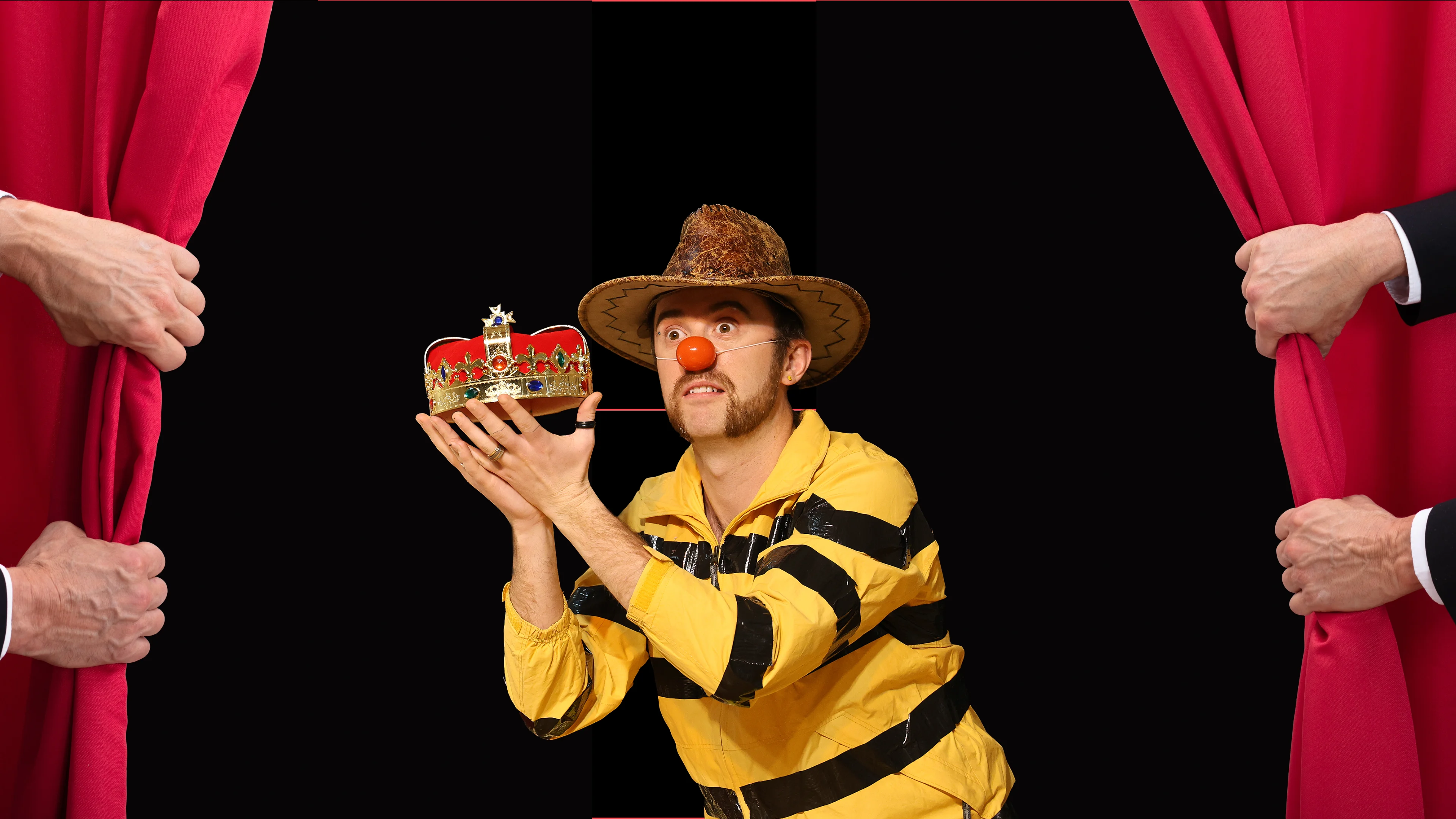
Taster Class In Clown Comedy
Theatre Deli, London
Learn More

Audience sensitivity is one of the defining features of live clowning. It’s the clown’s radar, sonar and sixth sense all rolled into one. At its heart, it’s about noticing what the audience is enjoying -and then feeding them more of it. Not by guessing, but by really listening. Watching. Feeling. Sensing.
This isn’t just crowd-pleasing or pandering. It’s about entering into a relationship - a playful, responsive dance - with the people in front of you, in this moment.
Tuning in: Clowns don’t just perform at an audience. They perform with them. Every twitch of laughter, every inhale, every shuffling silence is information. Was the laugh because of the way you tilted your head? The timing of a pause? The slight squeak in your voice? Clowns learn to read the room like a book with no words - just feelings, rhythms and patterns.
Adjusting in real time: You may arrive with a structure or idea, but it’s not set in stone. Audience sensitivity means being willing to pivot. Maybe you thought the funny bit was the banana, but they’re obsessed with your sock. Guess what? The sock is now the star of the show.
Being specific: The more precise your listening, the more powerful your response. A clown doesn’t just hear laughter and repeat the last thing they did - they aim to identify the exact moment or detail that landed and echo or build on that.
Playing with patterns: Audience sensitivity is what allows clowns to repeat the same action or gag again and again and still get laughs—because they’re adjusting how and when they do it based on live feedback. It’s repetition with variation, not a mechanical loop.
Living in the now: What works tonight might flop tomorrow. That’s not a failure - it’s part of the game. Audience sensitivity means staying open to each unique audience, rather than chasing a fixed result.
This is what separates clowning from scripted or “set” performance styles. Stand-ups might tell the same joke night after night with identical wording, but a clown’s success depends on liveness. The joke is only funny if the audience is with you - and you can only know that by staying attuned to their reactions.
It’s also what keeps clowning alive for the performer. When you're sensitive to the audience, no two shows are ever truly the same. You’re not just pressing play on a performance - you’re entering a real-time relationship.
Watch your audience more than yourself. Are they smiling? Shifting? Holding their breath?
If something lands, linger. If it doesn’t, move on.
Keep a “comic microscope” on your best laughs. What exactly caused it?
Don’t assume tomorrow’s crowd will laugh in the same place.
Try “fishing” for laughs - throw something out and watch what ripples come back.
